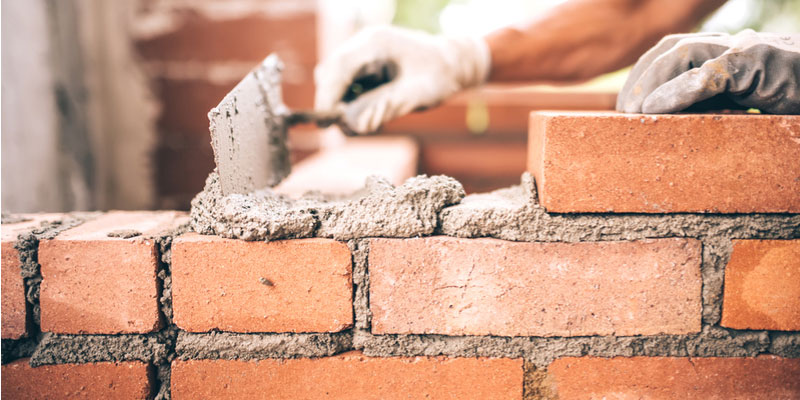Both brick and stone masonry offer a beautiful and timeless look, but is one necessarily “better” than the other? That’s hard to say, as both materials offer pros and cons, many of which overlap.
Brick and stone are popular materials that have spanned the test of time to prove themselves timeless and long lasting. Additionally, they are both fire-proof and weather resistant. Stones are always going to be less uniform in shape and size than bricks, which are made from perfectly shaped molds. Keep in mind, you don’t have to decide between one or the other, you can always go for a combination of the two.
To help you make a well-informed decision, here are some pros and cons of brick vs. stone masonry.
The Pros of Stone Masonry
1. Stone is incredibly durable
Some of the world’s oldest buildings are made from stone. For instance, Ireland’s landscape is dotted in stone buildings that date back 5,000+ years and are still standing strong today.
2. Stone is Luxurious & Timeless
Stone adds a touch of luxury, character, and charm to buildings. It also works well with other construction materials, and can enhance anything from a warm cottage to a stunning cathedral. Plus, it’s look is timeless and will never go out of style.
3. Stone is a Naturally Cool Material
Stone buildings are ideal in hot climates because stones are naturally cool, and therefore, help keep interiors cooler.
4. You Can Incorporate Local Stone
Some projects offer the chance to incorporate stone from the surrounding land. Stone texture and color varies by region, and so, it’s always nice to use local stone. This can eliminate the need to transport stone on site—which is better for your wallet and the environment.
The Cons of Stone Masonry
1. Stone Involves More Laborious Installation
Stone is highly durable but that’s in part due to a laborious and specialized installation process that involves a lot of patience and skill. As a result, installing stone structures may be cost prohibitive due to the physically demanding and hilly-skilled work involved.
2. It Won’t Keep You as Warm During Toronto’s Winters
A building made of solid stone masonry with no insulation is going to be ice cold in winter. For one, stones are naturally cold and start to feel like ice when the thermostat drops. Additionally, stone alone is not an effective insulator. Adding a layer of installation is key to year-round comfort no matter where you live.
3. Stone is Quarried
That means stone is dug up from the ground. As a result, virgin stone has a directly negative impact on the environment. It is possible to repurpose used stone, in which case a traditionally environmentally-taxing material becomes eco-friendly.
The Pros of Brick Masonry
1. It is Eco-Friendly
Brick is eco-friendly compared to stone and other popular building materials, such as wood. That’s because brick is made from some of Earth’s most abundant materials, shale and clay.
2. It is Long Lasting and Durable
Just like stone, brick was used to construct some of the world’s oldest buildings that are still standing today.
3. Bricks are Low Maintenance
Bricks don’t need to be painted; they have unbeatable color retention. Plus, they are incredibly durable against wind, weather, and other elements.
4. Adding Brick Can Increase Home Values
The National Association of Home Builders reported that 34% of survey respondents said they would pay more money for a brick home compared to a home made from other materials.
The Cons to Brick Masonry
1. Bricks are Low Maintenance, but Mortar is Not
This same con can go under stone as well, as both durable materials rely on mortar to hold them together. Mortar is engineered to fail over time as it takes on the bulk of pressure for bricks. That’s a good thing because mortar is easier and more affordable to fix than bricks. BUT, if cracked or crumbling mortar goes ignored, excess pressure transfers to bricks causing spalling and other types of brick damage that is costlier and more complicated to fix.
2. Less Option for Design Variation
Stone comes in a wider variety of shapes, sizes and tones. Bricks, on the other hand, are rather standard in terms of color and shape.

